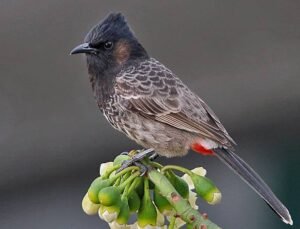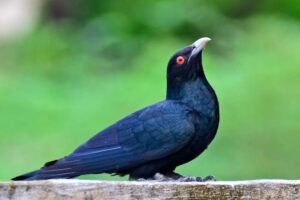Saw Scaled Viper Snake – Deadly Venomous
Saw Scaled Viper Snake All Information: The Saw Scaled Viper, scientifically known as Echis carinatus, is a small but highly venomous snake found across various regions, primarily in the Middle East, Central Asia, and the Indian subcontinent. Despite its small size, this snake is responsible for a significant number of snakebite incidents in its range, making it one of the most dangerous snakes to humans. Known for its distinctive saw-like scales that produce a raspy sound when the snake is agitated, the Saw Scaled Viper is a fascinating yet formidable reptile.

| Category | Details |
|---|---|
| Snake Name | Saw Scaled Viper |
| Scientific Name | Echis carinatus |
| Regional Names | English: Saw-scaled Viper, Indian Saw-scaled Viper, Little Indian Viper, Carpet Viper Marathi: फुरसे (Phoorsa / Furse), फरूड (Farood), कांडर (Kaandar – Wardha region), रक्ती कांबळ्या (Rakti Kamblya – North Konkan), आग्या फुरसे (Agya Furse – South Konkan), रक्ती परड (Rakti Parad – Vidarbha) Gujarati: તરાછ (Tarachha), ઝેરી પૈડકુ (Zeri Padkoo), ઉડણેયન (Udaneyn), પડકું (Padku), પૈડકું (Paidku), ફુરસા (Fursa) Hindi: अफई (Aphai / Afai), आरा शल्की पृदाकु (Ara Shalki Pridakoo), क्रकच शल्की घो (Krakach Shalki Gho) Malayalam: ചുരുട്ടമണ്ഡലി (Churuttamandali), അണലി (Anali), ചുരുട്ട (Churutta), ഈർച്ചവാൾ ശല്ക അണലി (Eerchaval Shalqa Anali), മണ്ഡലി (Mandali) Tamil: சுருட்டைவிரியன் (Surattai Viriyan), சுருட்டை பாம்பு (Surattai Pambu), விரியன் பாம்பு (Viriyan Pambu) Kannada: ಕಲ್ಲು ಹಾವು (Kallu Havu), ಗರಗಸ ಮಂಡಲ (Garagasa Mandala) Telugu: చిన్న పింజర (Chinna Pinjara), తోటి పింజర (Thoti Pinjara), పింజర (Pinjara) Bengali: ফুরসা বোড়া সাপ (Fursa Boda Sap), কাঁটা-আঁইশা বোড়া (Kanta-Aishya Boda), খুঁদে চন্দ্রবোড়া (Khude Chandraboda), বোড়া সাপ (Boda Sap), বঙ্করাজ (Bankaraj) Oriya (Odia): ଧୂଳିଆ ବୋଡା (Dhulia Boda), ଅହିରାଜ (Ahiraja – though also used for King Cobra, depending on context) Sindhi: કુપૂર (Kuppur), જાનડી (Janndi) Tulu: ನೆತ್ತೆರ್ ಮೂಗೇಲ್ (Netter Mugel) Sinhala (Sri Lanka): වැලි පොළඟා (Vali Polonga) Pashto (Pushtu): فسي (Phissi) Iraqi Arabic: حيّة سيد دخيل (ḥayyat sayyid dakhīl) Persian: مار جعفری (mār-e ja’fari) Russian: песчаная эфа (peschanaya efa) |
| Physical Description | Small, usually between 30-90 cm in length. It has a broad, flat head, and its body is covered with keeled scales. The coloration is typically sandy or brownish, with distinct patterns that provide excellent camouflage in its natural habitat. |
| Habitat | Deserts, scrublands, rocky hillsides, and arid regions. It prefers dry and warm environments, often found hiding under rocks or burrowing in loose soil. |
| Diet | Primarily feeds on small mammals, lizards, and amphibians. Occasionally, it may also prey on birds and insects. |
| Behavior | Nocturnal and highly irritable, the Saw Scaled Viper is known for its defensive behavior, where it rubs its body scales together to create a warning sound. It is quick to strike when threatened. |
| Venomous or Non-Venomous | Venomous |
| Venom Type | Hemotoxic |
| Venom Effects on Prey | The venom causes rapid coagulation of blood, leading to hemorrhaging and organ failure in prey, ensuring a quick kill. |
| Venom Effects on Humans | Causes severe pain, swelling, hemorrhaging, and in severe cases, can lead to kidney failure, respiratory distress, or even death if not treated promptly. |
| Common / Rare Species | Common Species |
| Life Span | 10-15 years in the wild |
| Mating & Reproduction | The Saw Scaled Viper is oviparous, laying eggs that hatch in 6-8 weeks. Mating typically occurs during the monsoon season, with females laying between 6-23 eggs. |
General Characteristics and Anatomy of Saw Scaled Viper
The Saw Scaled Viper is characterized by its small size and rough, keeled scales that produce a distinctive rasping sound when the snake is threatened. This sound, along with the snake’s quick, unpredictable strikes, serves as a warning to potential predators and threats. The viper has a broad, triangular head, and its eyes have vertical pupils, typical of many nocturnal snakes. Its coloration helps it blend seamlessly into its arid surroundings, making it an expert at camouflage.
The Role of Snakes in the Ecosystem
Snakes like the Saw Scaled Viper play a crucial role in maintaining the balance of ecosystems. They control populations of rodents and other small mammals, which helps prevent the spread of diseases and protects crops from being overrun by pests. As both predator and prey, they are integral to the food web, providing food for larger animals while keeping the populations of their prey in check.
Common Myths and Misconceptions about Snakes
Many myths surround snakes, especially venomous ones like the Saw Scaled Viper. A common misconception is that all snakes are aggressive and will attack humans unprovoked. In reality, most snakes, including the Saw Scaled Viper, prefer to avoid confrontation and will only strike when they feel threatened. Another myth is that snakes are slimy, but their scales are dry and smooth. Educating people about the true nature of snakes is essential for fostering a healthy respect for these creatures and reducing unnecessary fear.
Habitat and Distribution of Saw Scaled Viper
The Saw Scaled Viper is highly adaptable and can thrive in various habitats, though it is most commonly found in arid and semi-arid regions. It is well-suited to life in deserts, scrublands, and rocky areas where it can find plenty of hiding spots. These vipers are also found in grasslands and on the edges of forests, where they hunt for food. Geographically, the Saw Scaled Viper’s range extends from North Africa through the Middle East to South Asia, including India, Pakistan, and Sri Lanka.
| Habitat Type | Details |
|---|---|
| Deserts | Found in sandy and rocky deserts, where it can burrow and hide under rocks or in crevices. |
| Scrublands | Inhabits areas with sparse vegetation, often found under shrubs or in open ground. |
| Wetlands | Although rare, it can be found near water sources in arid regions during certain seasons. |
| Geographical Distribution | North Africa, Middle East, India, Pakistan, Sri Lanka, and parts of Southeast Asia. |
Snake Behaviour
Saw Scaled Vipers are primarily nocturnal hunters, preying on small mammals, lizards, and amphibians. They use their excellent camouflage to ambush prey and are known for their quick, decisive strikes. During mating, males often engage in combat, where they intertwine and wrestle with each other to win the favor of a female. Their defensive behavior is highly distinctive, with the snake rubbing its rough scales together to produce a warning sound, followed by rapid, aggressive strikes if threatened.
First Aid and Medical Treatment for Saw Scaled Viper Bites
If bitten by a Saw Scaled Viper, immediate first aid is crucial. Keep the victim calm and immobilized to slow the spread of venom. Do not apply ice, tourniquets, or cut the wound. Seek medical attention as quickly as possible, as antivenom administration is necessary to counteract the venom’s effects. Supportive care, including pain management and monitoring for complications like hemorrhaging or kidney failure, is vital.
Global Impact of Saw-Scaled Viper Bites
The Saw Scaled Viper is responsible for a significant number of snakebite incidents, especially in rural areas of its range. The lack of access to medical care in these regions exacerbates the impact of these bites, leading to high morbidity and mortality rates. Globally, the species is considered one of the most dangerous snakes due to its potent venom and proximity to human settlements.
If You Encounter a Snake on Your Property
- Remain Calm and Assess the Situation: Panicking can lead to poor decisions; stay calm and observe the snake from a safe distance.
- Ensure Safety: Keep yourself, family members, and pets away from the snake to avoid accidental bites.
- Identify the Snake (If Possible): If safe to do so, try to identify the snake to determine if it is venomous or not.
- Contact Professional Help: Reach out to local wildlife authorities or professional snake rescuers to safely rescue the snake.
- Prevent Future Encounters: Seal entry points in your home, clear debris from your yard, and avoid leaving food sources that attract snakes.
- Educate Yourself and Others: Learning about local snake species and their behaviors can help prevent unnecessary fear and promote coexistence.
Tips for Snake Enthusiasts
- How to Safely Observe Snakes in the Wild: Always maintain a safe distance, avoid sudden movements, and use binoculars or zoom lenses for close observation.
- Tips for Aspiring Herpetologists: Start by learning about local species, join herpetology clubs, participate in fieldwork, and respect the wildlife you study.
Interesting Facts about Saw Scaled Viper
The Saw Scaled Viper’s name comes from its unique defensive behavior, where it rubs its scales together to produce a distinctive “sawing” sound.
Despite its small size, the Saw Scaled Viper’s venom is incredibly potent, with the ability to cause severe internal bleeding in both prey and humans.
Unlike many other snakes, the Saw Scaled Viper is highly irritable and will not hesitate to strike if it feels threatened, making it one of the most aggressive snakes in its range.
This species is known to be responsible for more human fatalities than any other snake in its range, due to its venom’s potency and the snake’s proximity to human settlements.
Saw Scaled Vipers are masters of camouflage, often blending so well into their surroundings that they are nearly impossible to spot until they move or strike.
The species has adapted to thrive in some of the harshest environments, from scorching deserts to arid scrublands, making it a resilient and versatile predator.
FAQs About the Saw Scaled Viper
1. What is a Saw Scaled Viper?
The Saw Scaled Viper is a small, highly venomous snake known for its distinctive saw-like scales. These scales produce a rasping sound when the snake feels threatened. It is commonly found in arid regions across North Africa, the Middle East, and South Asia.
2. How dangerous is the Saw Scaled Viper?
The Saw Scaled Viper is one of the most dangerous snakes in its range due to its potent venom and aggressive behavior. Its venom is hemotoxic, causing severe internal bleeding and tissue damage, which can be life-threatening if not treated promptly.
3. What does the Saw Scaled Viper eat?
This viper primarily feeds on small mammals, such as rodents, as well as lizards, frogs, and occasionally insects. It is an ambush predator, relying on its camouflage to catch prey off-guard.
4. Where can I find the Saw Scaled Viper?
Saw Scaled Vipers are typically found in dry, arid environments like deserts, scrublands, and rocky areas. They are common in regions spanning from North Africa to India and Pakistan.
5. How can I identify a Saw Scaled Viper?
You can identify a Saw Scaled Viper by its small size, broad head, rough, keeled scales, and distinctive sound it makes by rubbing its scales together. The snake is usually sandy or brown in color, with patterns that help it blend into its surroundings.
6. What should I do if I see a Saw Scaled Viper?
If you encounter a Saw Scaled Viper, stay calm and keep your distance. Avoid trying to touch, handle, or disturb it in any way. For your safety, it’s best to contact a professional snake handler or wildlife expert to safely remove the snake from your property.
7. What happens if a Saw Scaled Viper bites me?
A bite from a Saw Scaled Viper can cause severe pain, swelling, and bleeding. It’s crucial to seek medical attention immediately, as antivenom is needed to counteract the effects of the venom. First aid involves keeping the bite victim calm and immobilized while waiting for medical help.
8. Is the Saw Scaled Viper common?
Yes, the Saw Scaled Viper is considered a common species in its range. It is widely distributed and frequently encountered in its natural habitat.
9. How long does a Saw Scaled Viper live?
In the wild, a Saw Scaled Viper typically lives for about 10-15 years. Its lifespan can be shorter if it faces threats like predators or habitat loss.
10. Can I keep a Saw Scaled Viper as a pet?
It is not advisable to keep a Saw Scaled Viper as a pet due to its highly venomous nature and aggressive behavior. Handling this snake requires specialized knowledge and experience, and it is best left to professional herpetologists.
Related Information
| Topic | Link |
|---|---|
| History of Snakes: Evolution, Habitats, and Survival | wildlifenest.com/history-of-snakes-evolution-habitats-and-survival |
| The Big Four Snakes of India | wildlifenest.com/the-big-four-snakes-of-india |
| What Are Reptiles? | wildlifenest.com/what-are-reptiles |
| Cobra Snake: All Information | wildlifenest.com/cobra-snake-all-information |
| Russell’s Viper | wildlifenest.com/russells-viper |
| Common Krait: All Information | wildlifenest.com/common-krait-all-information |


